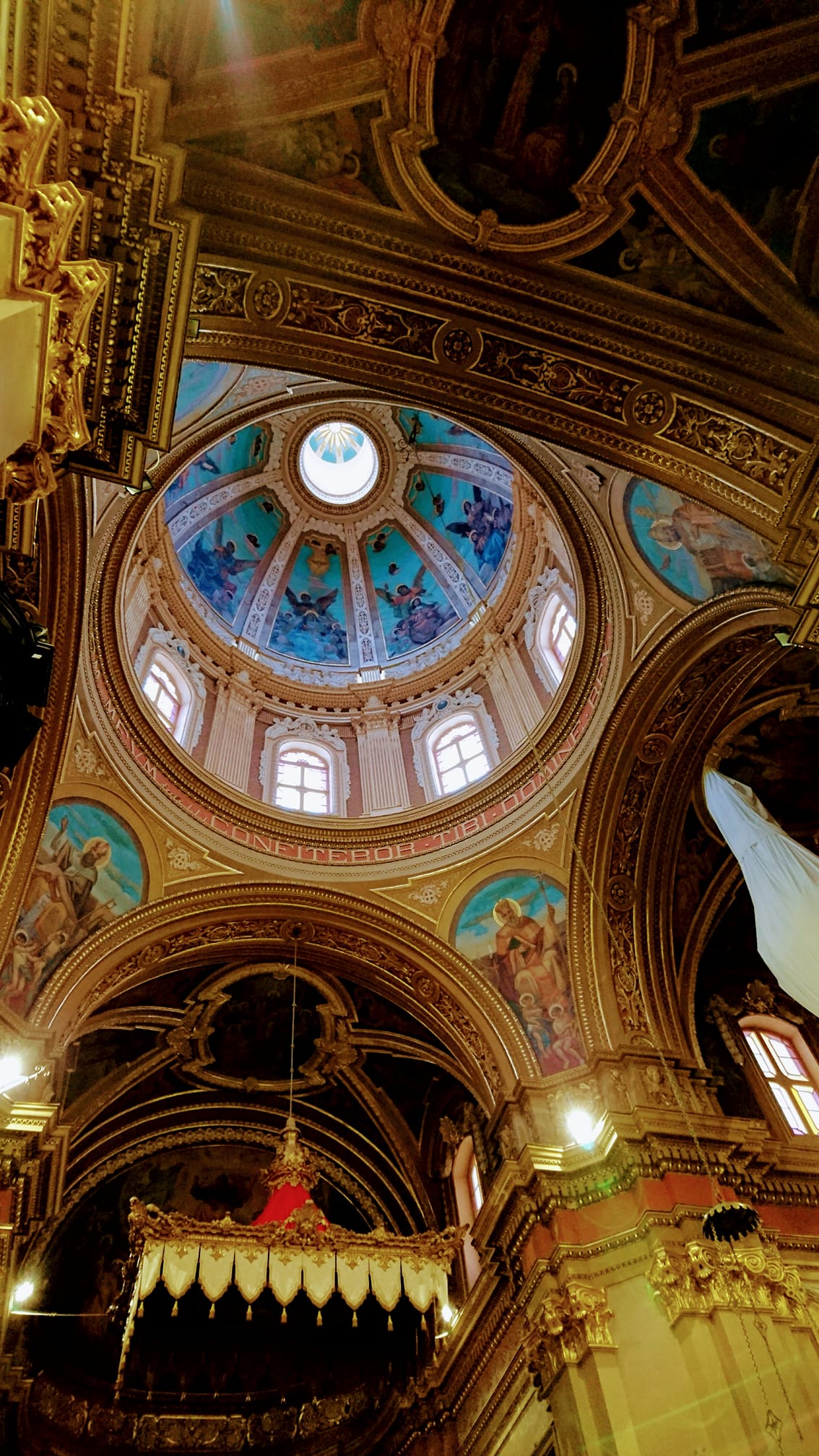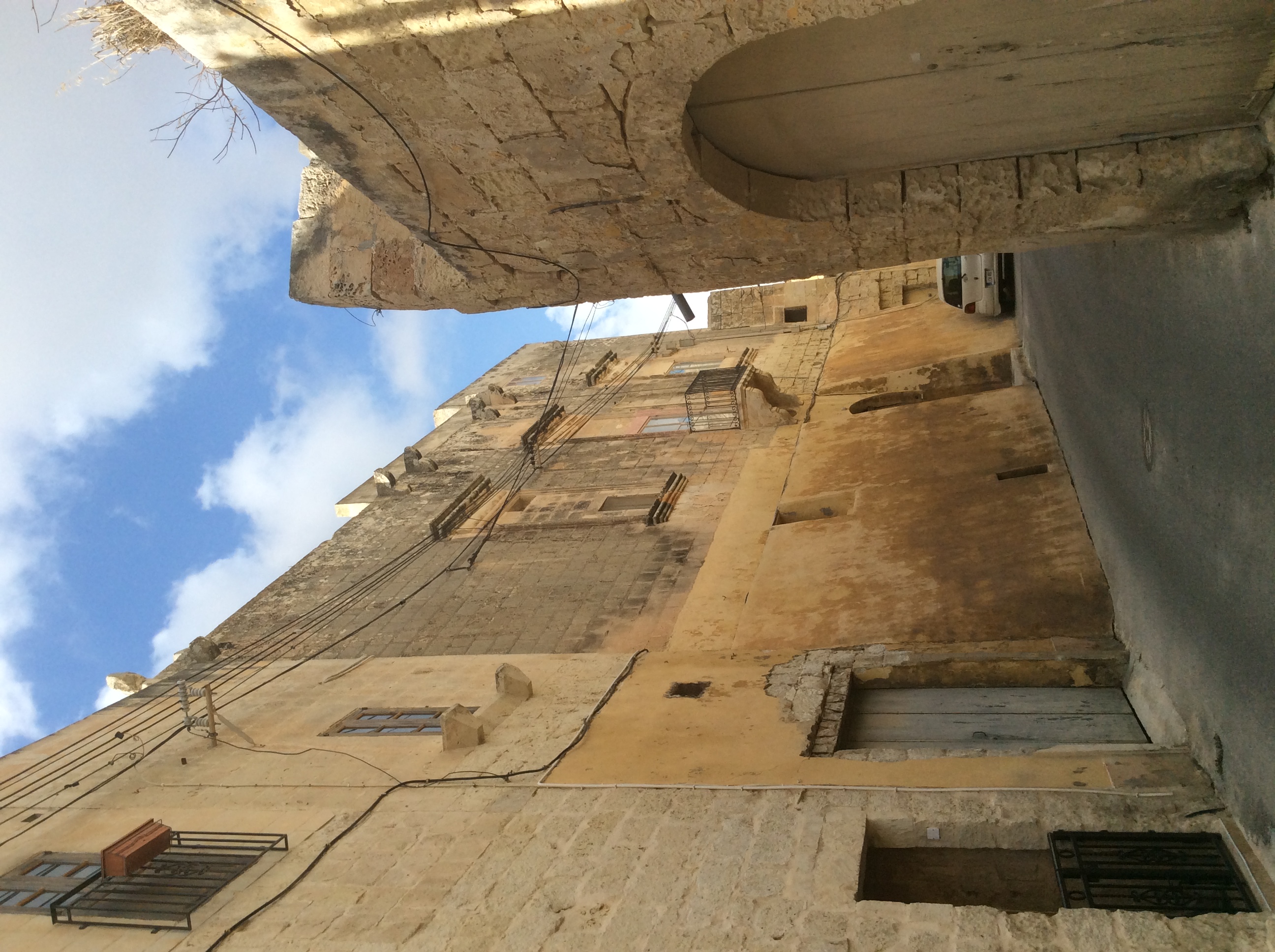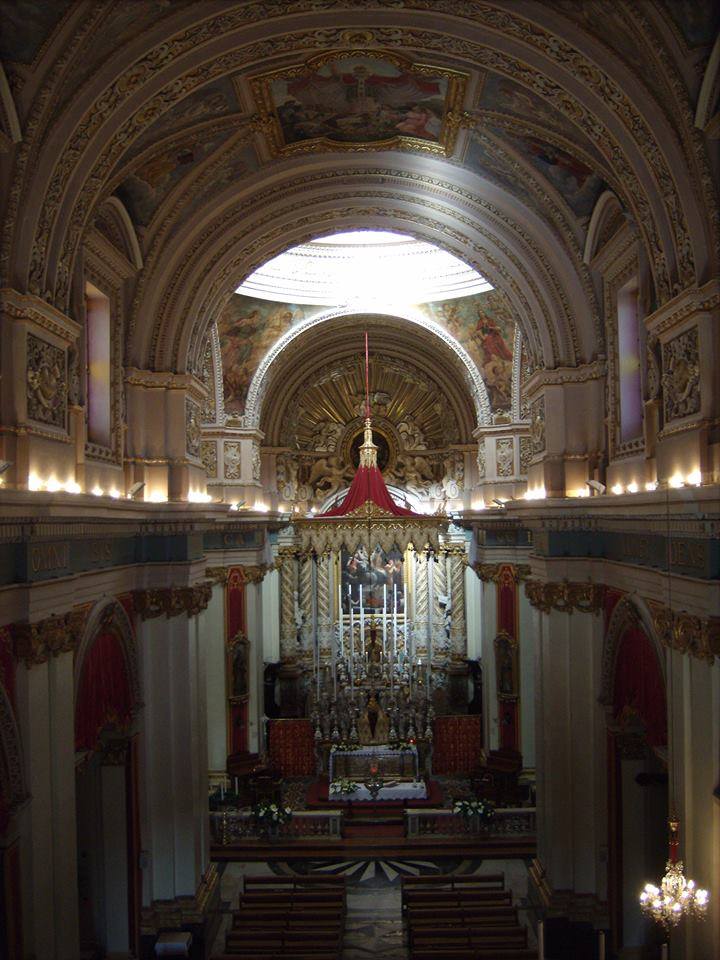|
Lorenzo Gafà
Lorenzo Gafà (1639–1703) was a Maltese Baroque architect and sculptor. He designed many churches in the Maltese Islands, including St. Paul's Cathedral in Mdina and the Cathedral of the Assumption in Victoria, Gozo. He was the younger brother of the sculptor Melchiorre Cafà. Life and works Main Gafà was born in 1639 in Birgu, to the stone carver Marco Gafà and his wife Veronica. He began his working life as a stone carver with his father and his older brother Melchiorre, who became a renowned sculptor. He might have studied architecture in Rome, although there is no documentary evidence that he ever left Malta. It is possible that Gafà was an apprentice of the Italian architect Francesco Buonamici while the latter lived in Malta. By the early 1660s he had developed a strong interest in architectural design and in 1661 is known to have been involved in the choir of the Church of St. Philip in Żebbuġ. Sometime before 1666, he worked on the reredos of the main altar ... [...More Info...] [...Related Items...] OR: [Wikipedia] [Google] [Baidu] |
Melchiorre Cafà
Melchiorre Cafà (1636–1667), born Melchiorre Gafà and also known as Caffà, Gafa, Gaffar or Gafar, was a Maltese Baroque sculptor. Cafà began a promising career in Rome but this was cut short by his premature death following a work accident. He was the older brother of the architect Lorenzo Gafà. Biography Cafà was born in Vittoriosa, Malta, and given the name Marcello at his baptism on 21 January 1636. After his move to Rome in 1658 or shortly after, he was most frequently referred to as Melchior (or Melchiorre) Maltese. His brother Lorenzo Gafà was one of the leading architects in Malta. Cafà was already an accomplished sculptor when he came to Rome and entered the workshop of Ercole Ferrata, who was not strictly speaking his teacher although he probably helped him refining his technique. Despite soon attracting his own commissions, he stayed in close contact with Ferrata and collaborated with him. In 1660 Cafà signed his first independent contract with Pri ... [...More Info...] [...Related Items...] OR: [Wikipedia] [Google] [Baidu] |
Rabat, Malta
Rabat ( ) is a town in the Western Region of Malta, with a population of 11,497 as of March 2014. It adjoins the ancient capital city of Mdina, and a north-western area formed part of the Roman city of Melite until its medieval retrenchment. The Apostolic Nunciature of the Holy See to the Republic of Malta is seated in this village. The Local Council of Rabat is also the administrator of Baħrija. Parts of the films ''Munich'' and '' Black Eagle'' were shot in Rabat. In December 1999, Mtarfa was split from Rabat to form a separate Local Council by Act XXI, an amendment to the Local Council Act of 1993 (Act XV). In 2021, Rabat was transferred from the Northern Region to the newly-created Western Region as part of a reorganization of the regions of Malta. Etymology Rabat is an Arabic word which can mean "fortified town" or "suburb". The Arabic term Ribat refers to a small fortification to host military volunteers. Catacombs Rabat is home to the Catacombs of St. Paul and ... [...More Info...] [...Related Items...] OR: [Wikipedia] [Google] [Baidu] |
Church Of St Catherine, Żejtun
The Church of St Catherine (), Żejtun, is a Roman Catholic church, the seat of the archpriest of Żejtun and the mother church of various parishes established from the originally larger territory of the Żejtun parish. The parish church, its oratory and an adjacent pastoral centre form a complex of Grade 1 and 2 listed buildings in the centre of town. The Church and its complex sit in front of the ''Il-Gwiedi'' quarter, commanding views from both the '' Tal-Barrani'' and ''Triq l-Aħħar Ħbit mit-Torok'' town approaches. Its dedication to Catherine of Alexandria dates back to an original church standing from this site, extant from at least the fifteenth century, and was one of the eight mother churches on Malta. The church, dating from the late 17th century, was designed in the Maltese baroque style by Lorenzo Gafà. Its construction was part of an urbanisation programme in Żejtun spearheaded by Gregorio Bonici. The church is one of the most famous and most recognisable ... [...More Info...] [...Related Items...] OR: [Wikipedia] [Google] [Baidu] |
Qrendi
Qrendi () is a village in the Western Region, Malta, Western Region of Malta, with a population of 3,148 people as of October 2021. It is located close to Mqabba, Żurrieq and Siġġiewi. Within its boundaries are the two Neolithic temples of Mnajdra and Ħaġar Qim. Two annual feasts are held in Qrendi: the feast of Our Lady of Lourdes is celebrated either on the last Sunday of June or the first Sunday of July, and the Feast of the Ascension of Our Lady on 15 August. Although the majority of the village's old core buildings remain today, Qrendi has changed considerably in recent times. A bypass road has been built to divert through-traffic away from the village, modern suburb developments have been built and an open space with a bus terminus created in front of the Parish Church by removing the walled grounds from an old villa. History Fossilized remains of animals dating back to the Quaternary Period have been found in the environs of Qrendi. The remains were found in caves ... [...More Info...] [...Related Items...] OR: [Wikipedia] [Google] [Baidu] |
Parish Church Of The Assumption, Qrendi
The Church of the Assumption ('' Malti Knisja tal-Assunta or Knisja ta' Santa Marija'') is a Roman Catholic parish church located in Qrendi, Malta. History While Qrendi formed part of the parish of Żurrieq, in 1575 its main church was dedicated to the Nativity of Mary. Sometime later, in the year 1594, it was however rebuilt by the people of the village and was rededicated to the Assumption of Mary. During second pastoral visit of Bishop Baldassare Cagliares he declared Qrendi a separate parish, uniting to it the two small communities of Ħal Lew and Ħal Manin. This dismemberment took place on 15 February 1618 with the consent of Rev. Nicola Bonnici, the parish priest of Żurrieq. As many times happened, a few years after a parish was erected, the church identified to serve as the parish church became inadequate for the daily religious needs of the parishioners as these began to grow in number. This created the need for modification, enlargement or replacement of the original ch ... [...More Info...] [...Related Items...] OR: [Wikipedia] [Google] [Baidu] |
Qormi
Qormi (, , ), also known by its title Città Pinto, is a city in the Southern Region, Malta, Southern Region of Malta, southwest of Valletta in the centre of the island. It has a population of 16,324 (as of March 2018), making it Malta's fifth-largest city. Qormi has two parishes, one dedicated to Saint George and one to Saint Sebastian. It contains two valleys: Wied ''il-Kbir'' (The Large Valley) and ''Wied is-Sewda'' (Black Valley). Its bordering towns are Marsa, Malta, Marsa, Luqa, Żebbuġ, Siġġiewi, Ħamrun, Birkirkara, Attard, Santa Venera and Balzan. Elder inhabitants of Qormi speak a broad Qormi Dialect, which is now in decline. Etymology The name Qormi is most likely derived from the surname ''Curmi'', which is documented in Sicily as of 1095. Several other places in Malta derive their names from surnames, including Balzan, Attard and Ghaxaq. When Qormi is mentioned for the first time in the year 1419, only two of twenty people with the surname Curmi lived in the vi ... [...More Info...] [...Related Items...] OR: [Wikipedia] [Google] [Baidu] |
Parish Church Of St George, Qormi
The Church of St George is a 16th-century baroque Roman Catholic parish church located in Qormi, Malta. History The parish of St George is one of the 12 parishes mentioned in the rollo of Bishop Senatore de Mello in 1436. The church structure was built three times. The original parish church was demolished and a larger one was built on the same site in the mid-15th century. The church was then reconstructed in a larger form around 1585. The dome was added in 1684 on designs by Lorenzo Gafà. The church was consecrated on May 6, 1731. The church was elevated to the status of Collegiate church on 30 June, 2019. Works of art The church is the home of the last work by Mattia Preti depicting the martyrdom of St George. In the background of this painting one can see a young St George on horseback in the act of killing the dragon to save the princess. The details is the same as the St george that Preti had executed for the Chapel of Aragon in St John’s Co-cathedral in Valletta Val ... [...More Info...] [...Related Items...] OR: [Wikipedia] [Google] [Baidu] |
Marsaxlokk
Marsaxlokk () is a small, traditional fishing village in the Southern Region, Malta, Southern Region of Malta. It has a harbour, and is a tourist attraction known for its views, fishing and history. As of March 2014, the village had a population of 3,534. The village is also known for the Marsaxlokk Market, which is mainly a large fish market which takes place along the seafront on Sundays, and a tourist market during all other days of the week. Inhabited and well-known since antiquity, Marsaxlokk was used as a port by Phoenicians, Punics, Carthaginians and also has the remains of a Roman Empire, Roman-era harbour. Originally a part of the city of Żejtun, the fishing village became a separate parish in the late nineteenth century. Traditional Luzzu, luzzi and other larger and more modern vessels line the sheltered inner harbour. The village is also popular among locals and tourists alike for its walks around the coast and harbour, its restaurants, as well as for its swimming z ... [...More Info...] [...Related Items...] OR: [Wikipedia] [Google] [Baidu] |
Saint Lawrence's Church, Vittoriosa
The Collegiate church of Saint Lawrence () is an old Church situated in Birgu in Malta. History In the 'Rollo' (inventory) of the benefices of the churches and chapels in Malta and Gozo, held by Bishop de Mello in 1436, a total of 12 established chapels are mentioned, amongst them the Church of San Lorenzo a Mare. When the Order of Saint John first settled in Malta in 1530, all of their langues were based in Birgu, so the Church of Saint Lawrence was used as the Order's first conventual church in Malta. It served this purpose for 41 years from 1530 to 1571 until the Knights were transferred to the new capital city Valletta. The foundation stone of the present church was laid in May 1681 by Bishop Molina. It was completed in 1696. The church was inaugurated by Bishop Davide Cocco Palmieri on the feast of St Lawrence, August 10, 1697. It was consecrated in 1723. In 1820, Pope Pius VII bestowed the dignity of Collegiate church upon the parish church of St Lawrence. War period On ... [...More Info...] [...Related Items...] OR: [Wikipedia] [Google] [Baidu] |
Monastery Of St
A monastery is a building or complex of buildings comprising the domestic quarters and workplaces of Monasticism, monastics, monks or nuns, whether living in Cenobitic monasticism, communities or alone (hermits). A monastery generally includes a place reserved for prayer which may be a chapel, Church (building), church, or temple, and may also serve as an Oratory (worship), oratory, or in the case of Cenobium, communities anything from a single building housing only one senior and two or three junior monks or nuns, to vast complexes and estates housing tens or hundreds. A monastery complex typically comprises a number of buildings which include a church, dormitory, cloister, refectory, library, Wiktionary:balneary, balneary and Hospital, infirmary and outlying Monastic grange, granges. Depending on the location, the monastic order and the occupation of its inhabitants, the complex may also include a wide range of buildings that facilitate self-sufficiency and service to the commun ... [...More Info...] [...Related Items...] OR: [Wikipedia] [Google] [Baidu] |
Siġġiewi
Siġġiewi ( ), also called by its title Città Ferdinand, is a city and a local council in the Western Region of Malta. It is the third largest council in Malta by surface area, after Rabat and Mellieħa. Siġġiewi is situated on a plateau a few kilometers away from Mdina (the ancient capital city of Malta) and away from Valletta, the contemporary capital. History In its demographic and topographical formation, Siġġiewi followed a pattern common to other villages in Malta. Before the arrival of the Order of St John in 1530, there were other thriving hamlets in the area. Little by little, Ħal Xluq, Ħal Kbir, Ħal Niklusi, and Ħal Qdieri were absorbed in Siġġiewi and today only their secluded chapels remain. The origins of the name Siġġiewi are unknown. The name is unique and bears no resemblance to well-known words. "Siġġiewi" may be a corruption of an old name. The areas around Siġġiewi were inhabited since the Maltese islands were occupied by the first ... [...More Info...] [...Related Items...] OR: [Wikipedia] [Google] [Baidu] |
Church Of St Nicholas, Siġġiewi
The Church of St Nicholas is the Roman Catholic parish church of Siġġiewi, Malta, dedicated to Nicholas of Bari. It was built in the late 17th century and it took over the function of an older parish church which was located elsewhere in the village and which now lies in ruins. Original church Siġġiewi was listed as one of Malta's first parishes by Bishop Senatore de Mello in his ''rollo'' of 1436. The old parish church was located in another part of the village, and it was built and enlarged gradually between the 15th and early 17th centuries. The building was abandoned and partially demolished after the present parish church was built, but some ruins still stand and they were classified as a heritage site in 1998 and were restored in 2007. Present church The present church of St Nicholas was built between 1675 and 1693. The church was consecrated on May 10, 1729. In 1862 the church was enlarged on the plans of Nikol Zammit. The side aisles, dome and portico were add ... [...More Info...] [...Related Items...] OR: [Wikipedia] [Google] [Baidu] |






